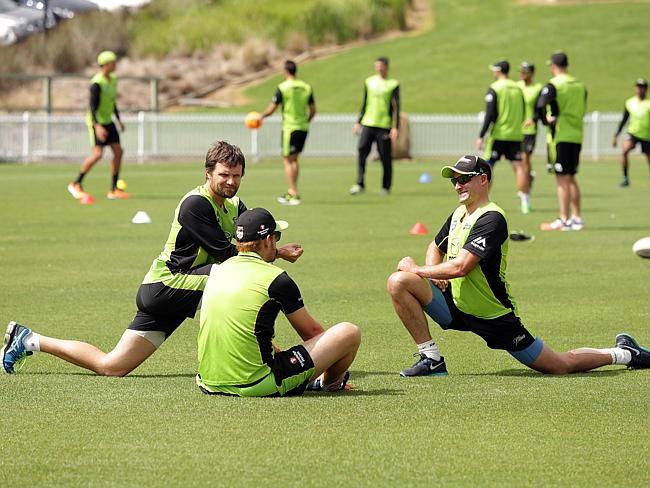The importance of a warm up and cool down for any training session cannot be over stated. The warm up and cool down are essential to any training or competition session. Their importance for promoting player wellbeing is addressed in Sports Medicine at warm up, stretching and cool down. The warm up and cool down has also been discussed in Factors Affecting Performance at warm up and cool down.
Warm up
Within a training session the warm up should be specific to the activities that are going to be completed in the session and the muscles being used. Often a warm up will begin with general whole body low intensity movements and become more specific throughout the warm up. This includes warming up before a strength training session. Here the warm up will move to the specific muscles being used and progress to include specific movements that will be used during training along with similar intensities.
Often a warm up will include some form/s of stretching. The type of stretching used should be specific to the training, so that similar types of muscle stretching is occurring. However, static stretching does not have to be used in a warm up as it has been shown to make little difference, and may impair some types of performance. The most commonly used type of stretching in a warm up today is dynamic stretching, though many athletes and coaches still use static stretching.
The warm up prepares the body for the session, improving performance, which during training means improved physiological adaptations, and promoting safety in the session. Check out the rugby specific warm up below.
Cool down
The cool down occurs after the training session and needs to be included in order to speed up recovery and help ensure good physiological adaptations occur. A cool down generally consists of low intensity movements using the same muscle groups and body systems as were used during the training session. The goal is to help remove waste products, and fluid in order to decrease post exercise oedema (swelling). A cool down is a physiological recovery strategy that helps the athlete recover and adapt to training. See the example cool down from the Institute of Fitness.
A warm up and cool down are essential elements to be considered when designing a training session.

